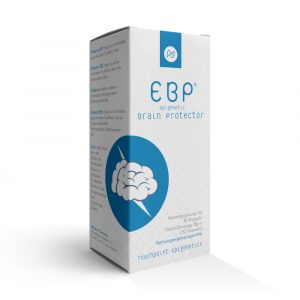
Arteries Remember Stress: Epigenetics and Atherosclerosis
Why do arteries remember every stress and every toxin—so that inflammation outlasts the exposure itself?
Case Vignette – Robert, 62
Robert, a 62-year-old accountant, comes to his doctor after a mild heart attack. He never smoked, his cholesterol is only moderately elevated, and his blood pressure is “not too bad.” Still, his coronary arteries show advanced atherosclerotic plaques. He wonders: Why me?
The answer lies not only in cholesterol levels, but in epigenetic scars left by decades of stress, pollution, and nutrition. Robert grew up in an industrial town, his father smoked heavily at home, and his own life was marked by long work hours and chronic stress. These experiences are not gone—they are written into his vascular genome.
1. Beyond Cholesterol – A Disease of Memory
For decades, atherosclerosis was seen as the passive buildup of lipids. Today, it is understood as a chronic inflammatory disease of the vessel wall, maintained by epigenetic memory in endothelial and immune cells.
2. Vascular Epigenetic Mechanisms
- DNA methylation
Silencing of protective genes (KLF2, eNOS) → ↓ nitric oxide, endothelial dysfunction
• Hypomethylation of IL-6, TNF-α promoters → ↑ chronic inflammation - Histone modifications
Smoke toxins inhibit HDAC2 → prolonged activation of inflammatory genes
• Acetylation at NF-κB targets sustains adhesion molecule expression (VCAM1, ICAM1) - Non-coding RNAs
miR-33 blocks cholesterol efflux (ABCA1 gene) → lipid retention
• miR-146a, miR-155 amplify immune cell activation in plaques
3. Vascular Memory of Stress and Metabolism
- Hyperglycemia (diabetes): leaves “metabolic memory” through permanent promoter methylation in endothelial cells.
- Chronic stress: alters NR3C1 (glucocorticoid receptor) methylation → exaggerated cortisol response in vascular cells.
- Smoking & air pollution: induce ROS → hypermethylation of NFE2L2 (antioxidant master regulator), silencing protective pathways.
4. Transgenerational Imprint
Animal studies suggest that maternal hypercholesterolemia or obesity during pregnancy alters offspring DNA methylation in vascular tissue—raising cardiovascular risk even without genetic mutation. Arteries can therefore inherit “a bad memory.”
5. Epigenetically Informed Prevention and Therapy
- Nutritional methyl donors (SAMe, folate, B12): reactivate silenced antioxidant and repair genes.
- Polyphenols (curcumin, resveratrol, EGCG): inhibit HDACs → anti-inflammatory gene expression.
- Omega-3 fatty acids: reshape miRNA profiles, reduce inflammation.
- Exercise: normalizes histone acetylation, improves nitric oxide signaling.
- Stress regulation (mindfulness, vagal activation): calms NF-κB-driven inflammatory marks.
Infobox – Key Epigenetic Targets in Atherosclerosis
| Gene / Marker | Epigenetic Change | Effect |
| KLF2 / eNOS | Hypermethylation | ↓ vasodilation, ↑ endothelial dysfunction |
| NF-κB targets (IL-6, TNF-α) | Histone acetylation | Sustained inflammation |
| NFE2L2 (NRF2) | Promoter hypermethylation | ↓ antioxidant defense |
| miR-33 | Overexpression | ↓ cholesterol efflux |
| miR-146a/155 | Dysregulation | ↑ immune activation in plaques |
6. Red Thread – From Exposure to Memory to Disease
Robert’s arteries did not “suddenly” clog. They accumulated memories: of childhood smoke exposure, metabolic stress, and decades of silent inflammation.
The sequence:
- Exposures (stress, toxins, diet) →
- Epigenetic reprogramming of endothelial & immune cells →
- Inflammation and plaque buildup →
- Heart attack.
Takeaway: Atherosclerosis is the epigenetic memory of inflammation in the vessel wall. But because epigenetic marks are reversible, arteries can also relearn—through nutrition, movement, and targeted therapy.
Eduard Rappold
Note: This information is provided for educational purposes only and does not replace professional medical advice. Always consult qualified healthcare professionals for medical concerns.
Copyright © Eduard Rappold 2025
http://nugenis.eu/shop
NUGENIS specializes in epigenetically active nutritional supplements.

